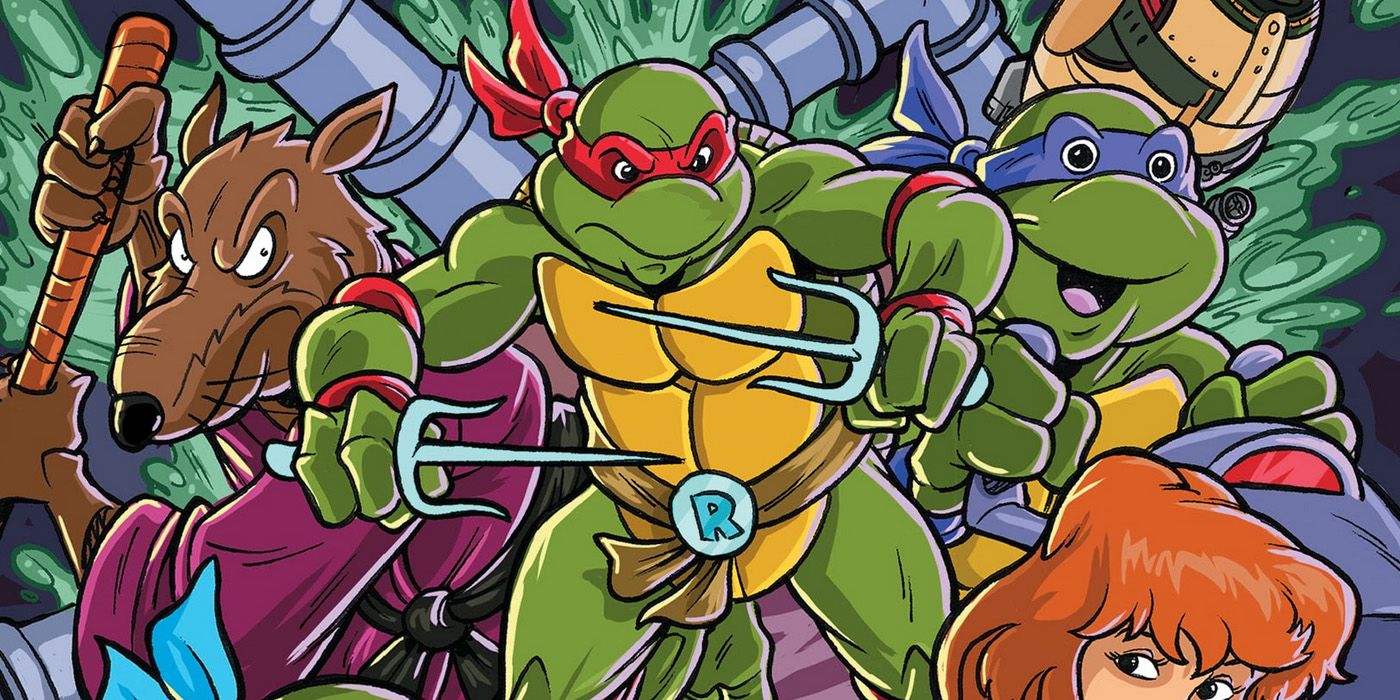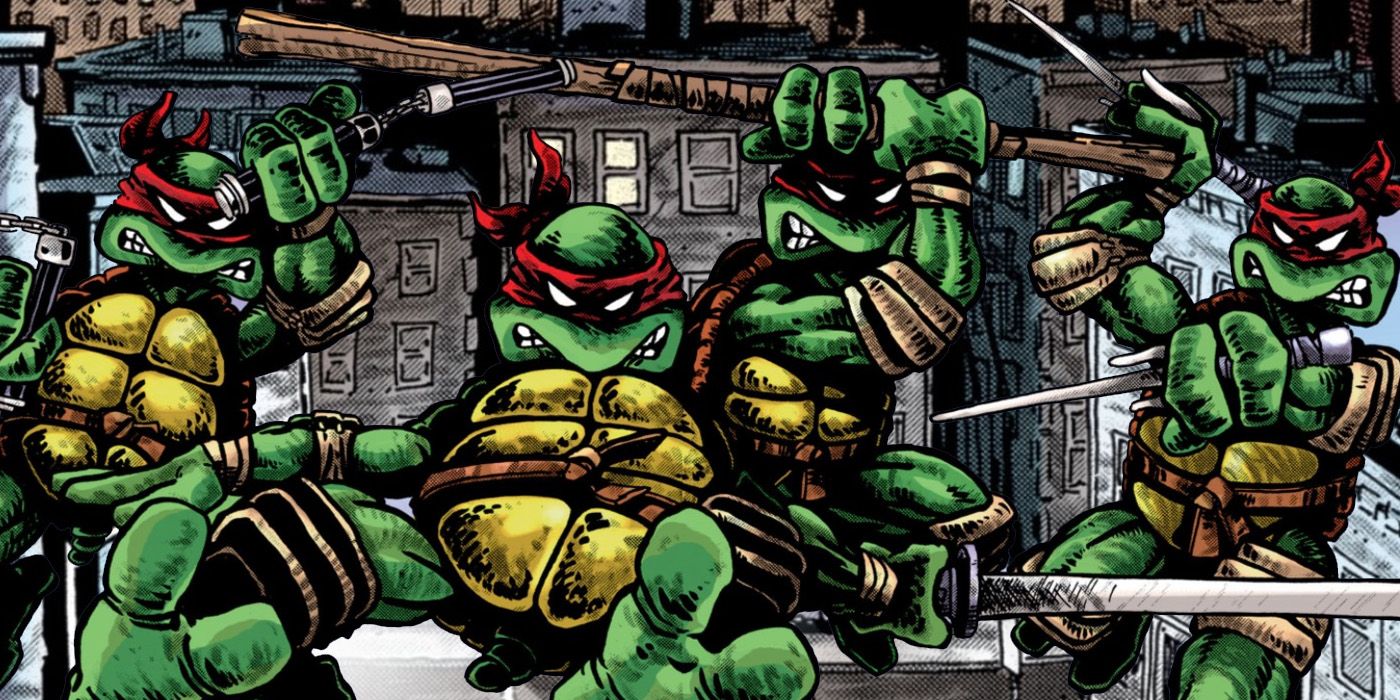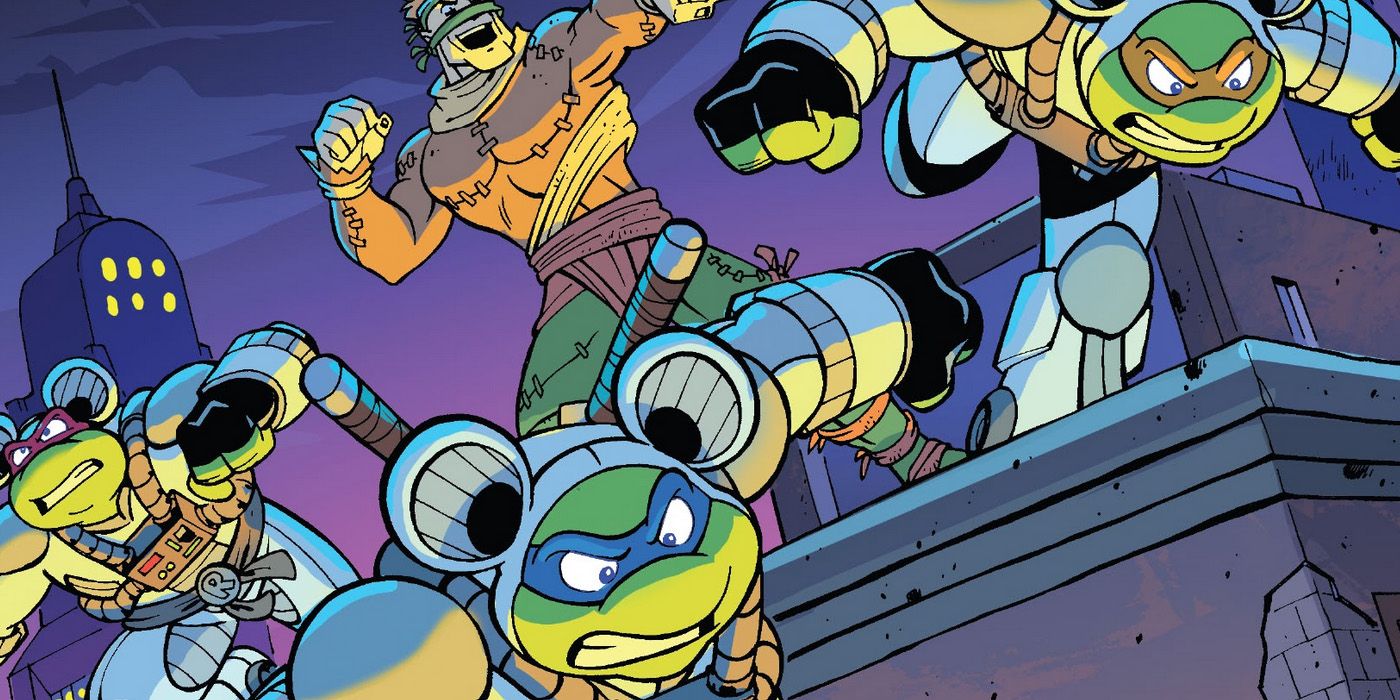The following contains spoilers for Teenage Mutant Ninja Turtles: Saturday Morning Adventures Continued #1, on sale now from IDW Publishing.
Despite the Teenage Mutant Ninja Turtle’s place as a megalithic cultural touchstone, the franchise has always maintained a somewhat chaotic sense of identity. From its dark and violent original comic book to its multiple animated adaptations, each had its own wildly different interpretation of the characters, themes and setting. The franchise has proven time and time again that, like the Turtles themselves, its greatest strength is its versatility.
Teenage Mutant Ninja Turtles: Saturday Morning Adventures Continued #1 (by Erik Burnham, Tim Lattie and Jack Lawrence), sees the four brothers subjugated by the mental commands of the Rat King after a brand-new canister of the mysterious ooze finds its way into the sewers and alters his ability to control rodents. Soon the Turtles are forced to face off against Splinter, April and the villainous Shredder at the behest of their new monarch, before they are unleashed on the city, wearing new rodent-themed techno-suits stolen from their old friends at TCRI.
IDW's TMNT Franchise Has Many Layers
Unlike the series that launched the Turtles, Teenage Mutant Ninja Turtles: Saturday Morning Adventures Continued #1 takes readers back to a golden age of storytelling. Combining the bright colors, straightforward conflicts and easygoing hijinks of the 1987 series, Saturday Morning Adventures Continued presents a warm yang to the original comic’s violent and oft-bloody yin, demonstrating that the power of the franchise lies in its flexibility. The Turtles can be thrust into just about any situation and prosper where other franchises may become bogged down by lore and tonal concerns.
In the world of fandoms, changes to the source material are often met with outright hostility. Therefore, the success the Turtles achieved by reinventing themselves, so often and so drastically, is a testament to their almost chameleonic ability to adapt to the cultural sensibilities. One only has to look at the evolution of everybody’s favorite party dude, Michelangelo, from era to era to see this adaptability on display. The transition from 1987’s “Cowabunga” to 2012’s “Booyakasha!” proves that whatever trappings the Turtles may wear, the core of the characters is something that can resonate with any audience.
The Strength of the Ninja Turtles Franchise Lies in its Flexibility
Of course, Teenage Mutant Ninja Turtles: Saturday Morning Adventures Continued #1 is a radical departure from the Turtles’ original outing which saw them gleefully using their weapons, as well as a handy grenade, to kill the Shredder in their opening confrontation. It is this very duality in how the franchise is approached that has allowed it to reach such great heights. Given its predilection for eccentric adventures, mutations and interdimensional conflicts, the Turtles' world is only enhanced by alternate takes. The plethora of crossovers, among their own variants as well as other franchises in general, is something that has been well-received by fans.
Unlike other intellectual properties, there is room for divergent explorations and iterations of TMNT's central characters. Though a lighter form of entertainment directed toward younger audiences, the Teenage Mutant Ninja Turtles: Saturday Morning Adventures Continued series acts as the perfect jumping-on point for youngsters just now finding their way to the franchise. And, the Turtles' universe is ready to pick up the reins and grow with its readers, taking them through time, space and beyond.



